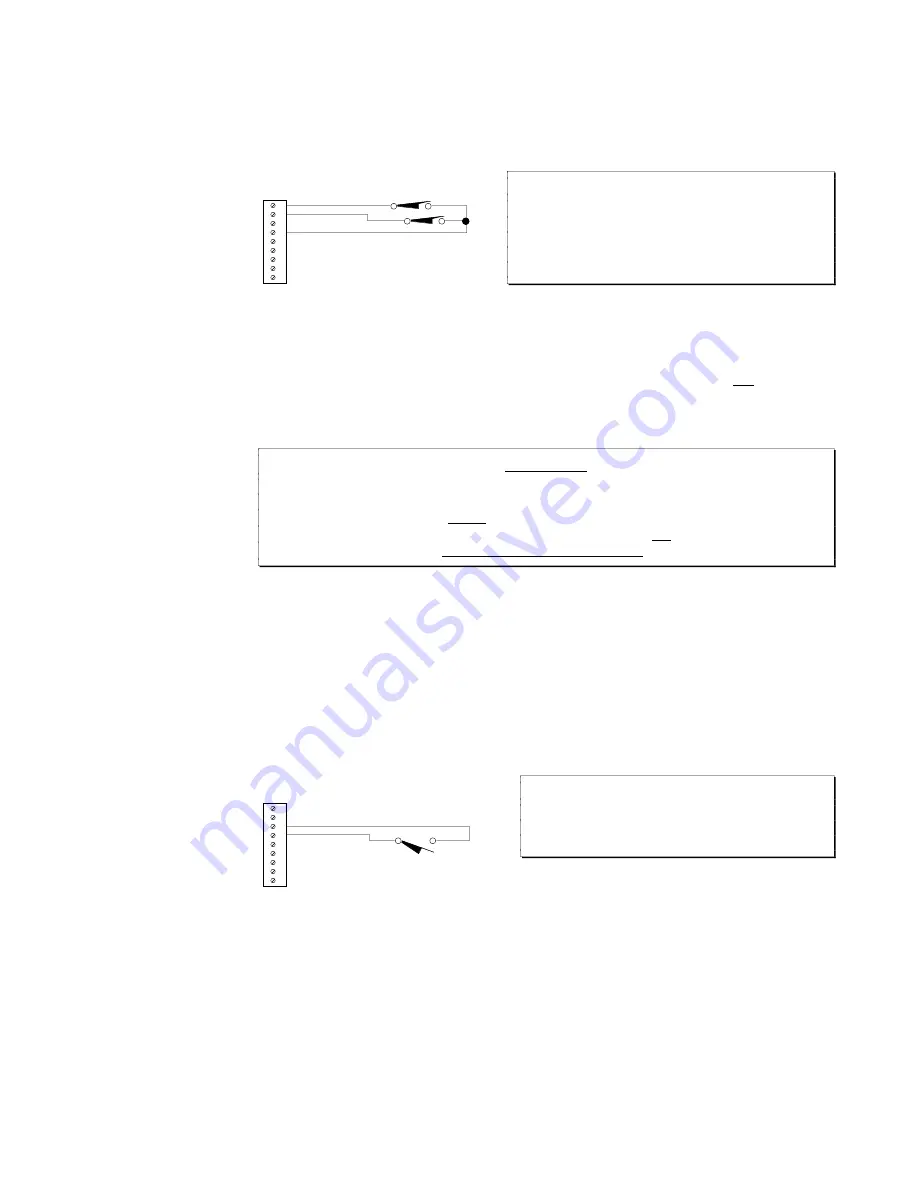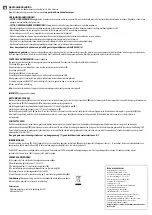
➂
Installation
13
End-of-Travel Limit Connections
The 6250 provides CCW and CW end-of-travel limit inputs for both axes via the
LIM 1/2
connector. End-of-travel inputs serve as safety stops that prevent the load from crashing into
mechanical stops and damaging equipment or injuring personnel. The drawing below
illustrates typical end-of-travel limit switch connections.
Normally-closed switches*
End-of-Travel Limits
*
LHLVL
command changes
active level of switches
1CW
1CCW
1HOM
GND
2CW
2CCW
2HOM
GND
SHLD
LIM 1/2
NOTE
Motion will not occur until you do one of the following:
❏
Install limit switches
❏
Disable the limits with the
LH
command
❏
Change the active level of the limits with the
LHLVL
command
Use of hardware
(and software) end-
of-travel limits is
discussed in detail in
the End-of-Travel
Limits
section in
Chapter 5.
Mount normally-closed switches such that the load forces them to open before it reaches the
physical travel limit (leave enough room for the load to stop). When the load opens
the limit switch, the motor comes to a halt. The actual stopping distance depends on motor
speed and the Hard Limit Deceleration (
LHADA
and/or
LHAD
) setting. The motor will not be
able to move in that same direction until you clear the limit (close the switch) and execute a
move in the opposite direction (or you can disable the limits with the
LH
command, but this
is recommended only if the motor is not coupled to the load). Use the
TLIM
or
TAS
commands to check the status of the limit switches.
<< CAUTION >> RUNAWAY << CAUTION >>
If a
runaway occurs (motor starts moving, usually at the fastest possible velocity, due to servo
instability), the 6250 will shut down the drive if the maximum encoder position error (set with the
SMPER
command) is exceeded before an end-of-travel limit (either hardware of software) is
encountered. However, if the maximum encoder position error is not exceeded by the time the
limit is encountered, the 6250 may not be able to stop the motor.
Home Limit Connections
Use the Home input to establish a home position or zero position reference point. The home
input (TTL compatible) is used for homing the motor. The encoder's Z channel pulse can be
used in conjunction with the home switch to determine the home position. To use the
encoder's Z channel, the
HOMZ
command must be enabled.
Homing is discussed
in detail in the
Homing
section in
Chapter 5.
The 6250 is shipped configured for use with normally-open home switches. You can, if you
wish, reverse the home input polarity (to use normally-closed switches) with the
HOMLVL
command. The most common way to use the home switch is to mount it at a home reference
position. The drawing below illustrates typical home limit switch connections to the 6250.
1CW
1CCW
1HOM
GND
2CW
2CCW
2HOM
GND
SHLD
Normally-open switch*
Home Limit
*
HOMLVL
command changes
active level of switch
LIM 1/2
CAUTION
Compumotor cannot guarantee proper homing
performance with the home and end-of-travel limit
inputs tied together.
















































